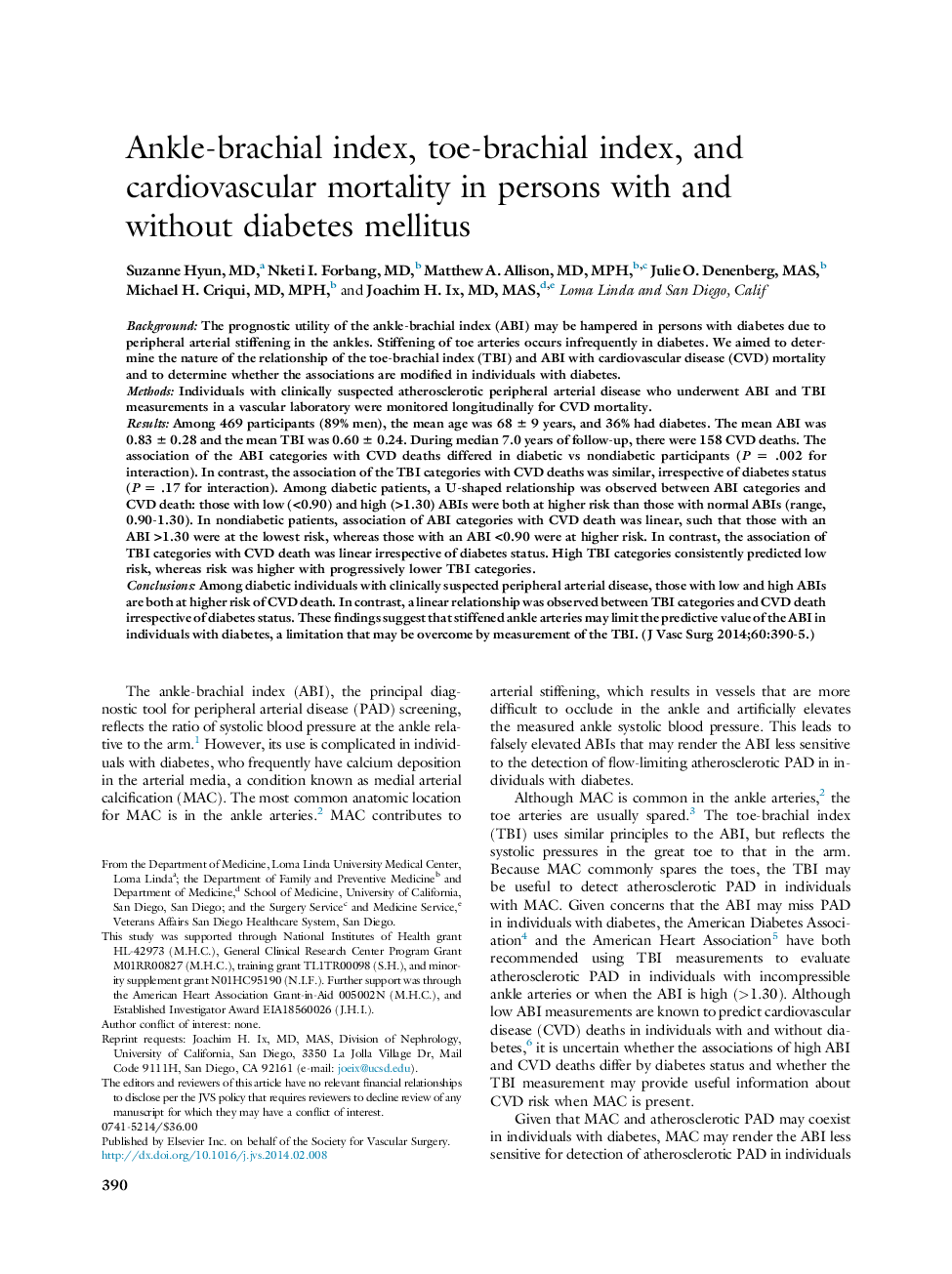| کد مقاله | کد نشریه | سال انتشار | مقاله انگلیسی | نسخه تمام متن |
|---|---|---|---|---|
| 5994608 | 1179830 | 2014 | 6 صفحه PDF | دانلود رایگان |
BackgroundThe prognostic utility of the ankle-brachial index (ABI) may be hampered in persons with diabetes due to peripheral arterial stiffening in the ankles. Stiffening of toe arteries occurs infrequently in diabetes. We aimed to determine the nature of the relationship of the toe-brachial index (TBI) and ABI with cardiovascular disease (CVD) mortality and to determine whether the associations are modified in individuals with diabetes.MethodsIndividuals with clinically suspected atherosclerotic peripheral arterial disease who underwent ABI and TBI measurements in a vascular laboratory were monitored longitudinally for CVD mortality.ResultsAmong 469 participants (89% men), the mean age was 68 ± 9 years, and 36% had diabetes. The mean ABI was 0.83 ± 0.28 and the mean TBI was 0.60 ± 0.24. During median 7.0 years of follow-up, there were 158 CVD deaths. The association of the ABI categories with CVD deaths differed in diabetic vs nondiabetic participants (P = .002 for interaction). In contrast, the association of the TBI categories with CVD deaths was similar, irrespective of diabetes status (P = .17 for interaction). Among diabetic patients, a U-shaped relationship was observed between ABI categories and CVD death: those with low (<0.90) and high (>1.30) ABIs were both at higher risk than those with normal ABIs (range, 0.90-1.30). In nondiabetic patients, association of ABI categories with CVD death was linear, such that those with an ABI >1.30 were at the lowest risk, whereas those with an ABI <0.90 were at higher risk. In contrast, the association of TBI categories with CVD death was linear irrespective of diabetes status. High TBI categories consistently predicted low risk, whereas risk was higher with progressively lower TBI categories.ConclusionsAmong diabetic individuals with clinically suspected peripheral arterial disease, those with low and high ABIs are both at higher risk of CVD death. In contrast, a linear relationship was observed between TBI categories and CVD death irrespective of diabetes status. These findings suggest that stiffened ankle arteries may limit the predictive value of the ABI in individuals with diabetes, a limitation that may be overcome by measurement of the TBI.
Journal: Journal of Vascular Surgery - Volume 60, Issue 2, August 2014, Pages 390-395
